College is an arduous journey. The transition into university can be a rocky one. But, do not fret! No one is not alone on this road. There is a plethora of resources and experiences just waiting to be explored here at La Sierra University. For this issue of the Honorgram, we are spotlighting the Title V programs that offer many projects such as STEM Bridge, STEM Pathways, and the Summer Research Experience. Keep on reading to hear from our fellow Honors students as well as the Title V team about how these opportunities can make a difference in your life for the next four years!
Responses collected by Ailinh Nguyen (Biomedical Science, Class of 2023)
STEM Bridge
STEM Bridge is a two-week preparatory program for students, mainly freshmen, looking for a career in the sciences. I was invited to join STEM Bridge during summer ‘22 before starting my undergraduate studies. Before coming to La Sierra, I was expecting a heavier academic load, so I was a little apprehensive. STEM Bridge seemed to be a useful experience to acclimate myself not only to the campus and faculty but also the academic culture and ethos I would be entering right afterwards.

During the two weeks, our STEM Bridge cohort did activities with the different departments –– Art Department, Health Science Department, and others –– that gave us a holistic academic experience beyond STEM. We were divided into four groups and tasked with conducting a literature review on our given subject. Then, we presented a poster about our work at the end of the program. My group looked at the effects of hydroponic farming on carbon emissions.
My favorite part of STEM Bridge would have to be the icebreakers we had each morning in the Palmer Hall lounge. Our cohort played a lot of UNO, and we were really animated at times. It was definitely a bonding experience, especially since I still spend a lot of time with them studying in the same classes.

STEM Bridge allowed me to get acquainted with faculty and the different departments as well as build rapport for these four years of studies and further. One of the things I appreciate and have been utilizing a lot is the journal database access via the library, which the program taught us how to use during one of the rotations. If I had not gotten accustomed to it, I would have had a harder time during these two quarters, as I would have had to find scholarly sources for different assignments. What made this learning more effective was applying it, which we did during the literature review project.
I also learned the importance of focus and being intentional with the given workload. Having almost finished two quarters, the rotations did not seem congruous to normal classes. The rotations were more tailored and strung together, ultimately focusing on our project. Nonetheless, there was an imperative to synthesize all those experiences, resources, and information into our work and not slack off. Our final project was definitely not anything publishable, but it was a beneficial experience to help me wade into higher education.
STEM Bridge was a good introduction to higher education and a step into learning how to work with faculty on research as well as presenting to others. Another important lesson I learned is the importance of teamwork in research. A group project is not complete without each and every one of its members because everyone brings something new to the table. The whole is only as good as the sum of its parts. I believe that the lesson of focusing on the synergy between myself and my teammates will benefit me both now in school and later in my career.
— John Banta (Neuroscience, Class of 2025)
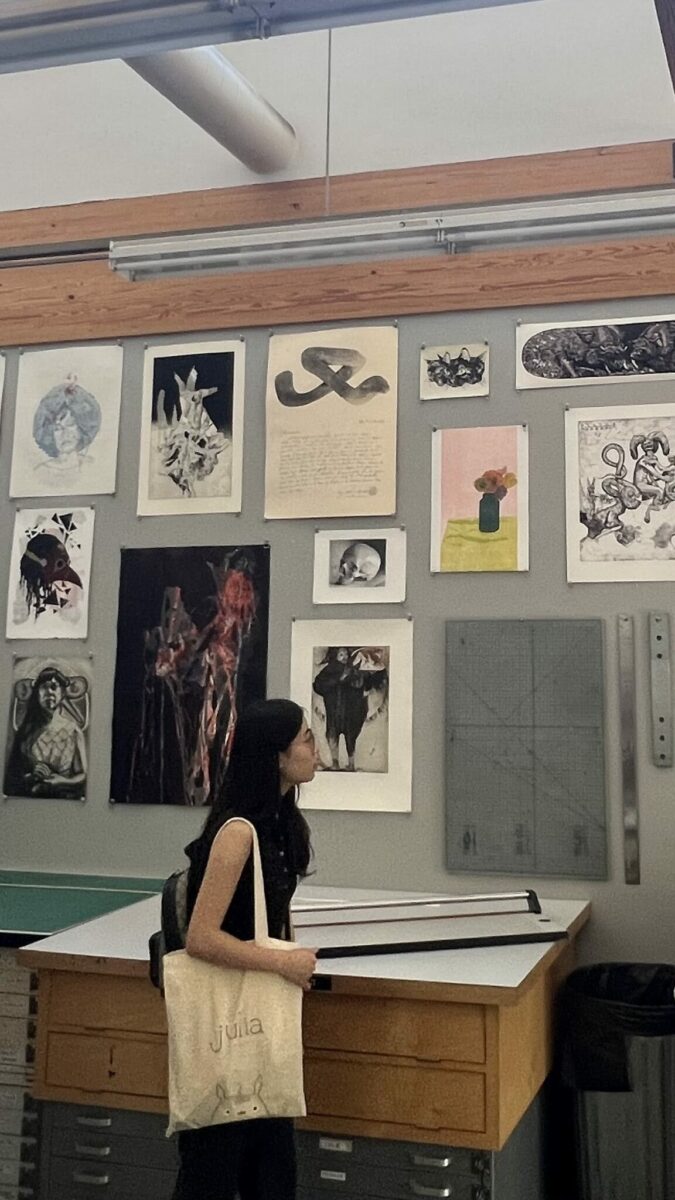
STEM Bridge is a holistic and collaborative learning summer intensive that gives incoming first-year and transfer students a multi-disciplinary research experience. I discovered STEM Bridge through mail and am grateful that I applied for the program as it allowed me to create precious memories and meet wonderful people.
Over the course of two weeks in September 2022, my peers and I learned about many aspects of hydroponic farming, including the biological and technological maintenance of farming, business management and production, the physics of horizontal versus vertical growing, and the chemistry behind formulating hydroponic solutions. All of this learning was done in conjunction with firsthand experience in the state-of-the-art Freight Farm, which helped the concepts feel applicable and truly stick.
Through these new lessons, my group and I created a research poster that explored applying biofortification to hydroponics to sustainably increase micronutrient content in crops. We found that most agricultural systems prioritize maximizing crop yield and productivity over nutritional value. This has led to a rapid rise in “hidden hunger,” or micronutrient deficiency, in food crops. To consumers, this means an increase in micronutrient malnutrition, detrimentally impacting overall human health.
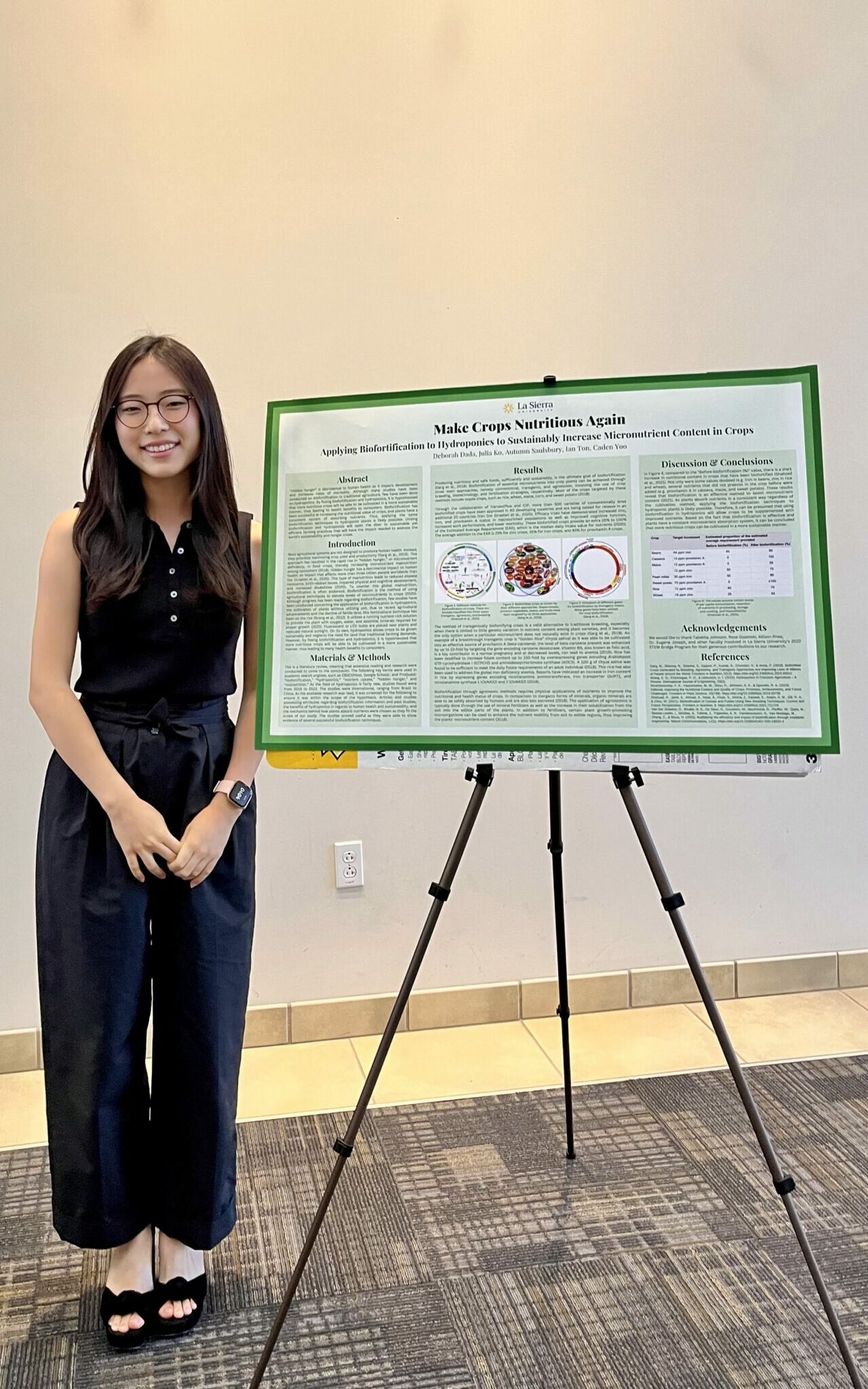
Biofortification, the method of using agricultural techniques to elevate levels of micronutrients in crops, is a means to counter this global malnutrition. Although progress has been made regarding biofortification, few studies have been conducted concerning the application of biofortification in hydroponics, the cultivation of plants without utilizing soil. On its own, hydroponics allows crops to be grown sustainably and absolves the need for land that traditional farming demands. However, by fusing biofortification and hydroponics, it was hypothesized that more nutritious crops will be able to be cultivated in a more sustainable manner, thus leading to many health benefits to consumers. My group and I presented our research at the end of the program to faculty, staff, and students, which was a great experience.
I am grateful that I had the opportunity to learn about hydroponics and expand my knowledge of sustainable agriculture, but I am even more grateful for the lovely people that made this experience all the more worthwhile. I would like to give a huge thank you to Ms. Tabetha, Rose, Cristina, and Allison for putting so much thought and intention into creating this program. Thank you!
— Julia Ko (Biomedical Science, Class of 2025)
Arriving at La Sierra University (LaSU) for the first time was quite an overwhelming experience. I knew nothing about the buildings, staff, services available, or anyone for that matter. It had only been a couple of weeks before I had heard about STEM Bridge from a friend. Although the decision to join was mostly impulsive, I figured it would at least be a good way to make some friends. During a warm summer night in early September, lying on an unfamiliar bed in an unfamiliar room, I began to wonder if it was the right choice for an introvert like myself to participate in STEM Bridge. Would I be able to connect with the other students? Was the work going to be difficult? I wanted to go home! However, it did not take long before these worries dissipated and were replaced with satisfaction, confidence, long-lasting friendships, and an unexpectedly-fulfilling start to my first year at LaSU.
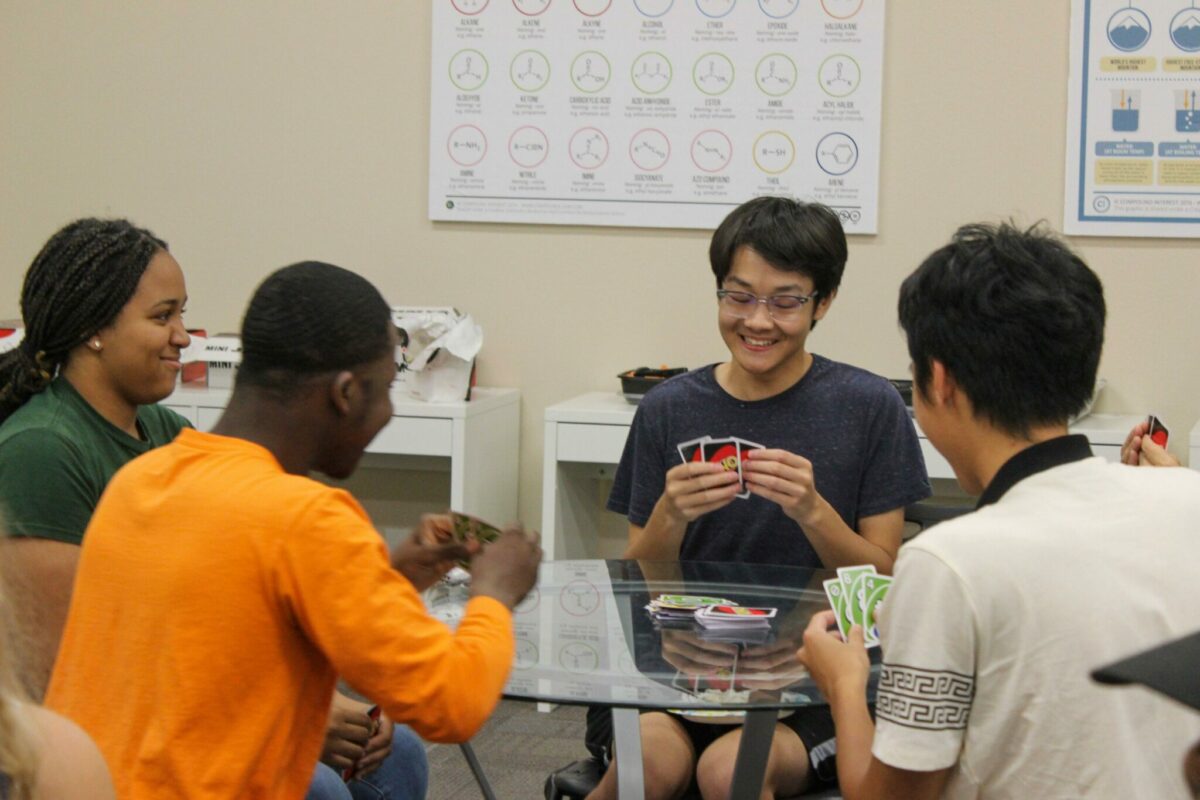
In short, STEM Bridge is a program offered at LaSU to students interested in, well, STEM! Throughout the 2-week duration of STEM Bridge, we engaged in an astonishingly-tailored experience that was oriented around exploring the departments, developing connections, refining our academics, and getting to know each other through plenty of icebreakers. By the end of the first week, the Bridgers all knew each other so well that the word “icebreaker” prompted some side-eyes and snickers. While the average day would start at 8:00 A.M. and end at around 10:00 P.M. or so, it never felt long or boring. Exploring the campus, learning from the directors, getting involved with the resources available, and being in the company of invaluable mentors and friends made time pass faster than any of us could have imagined.
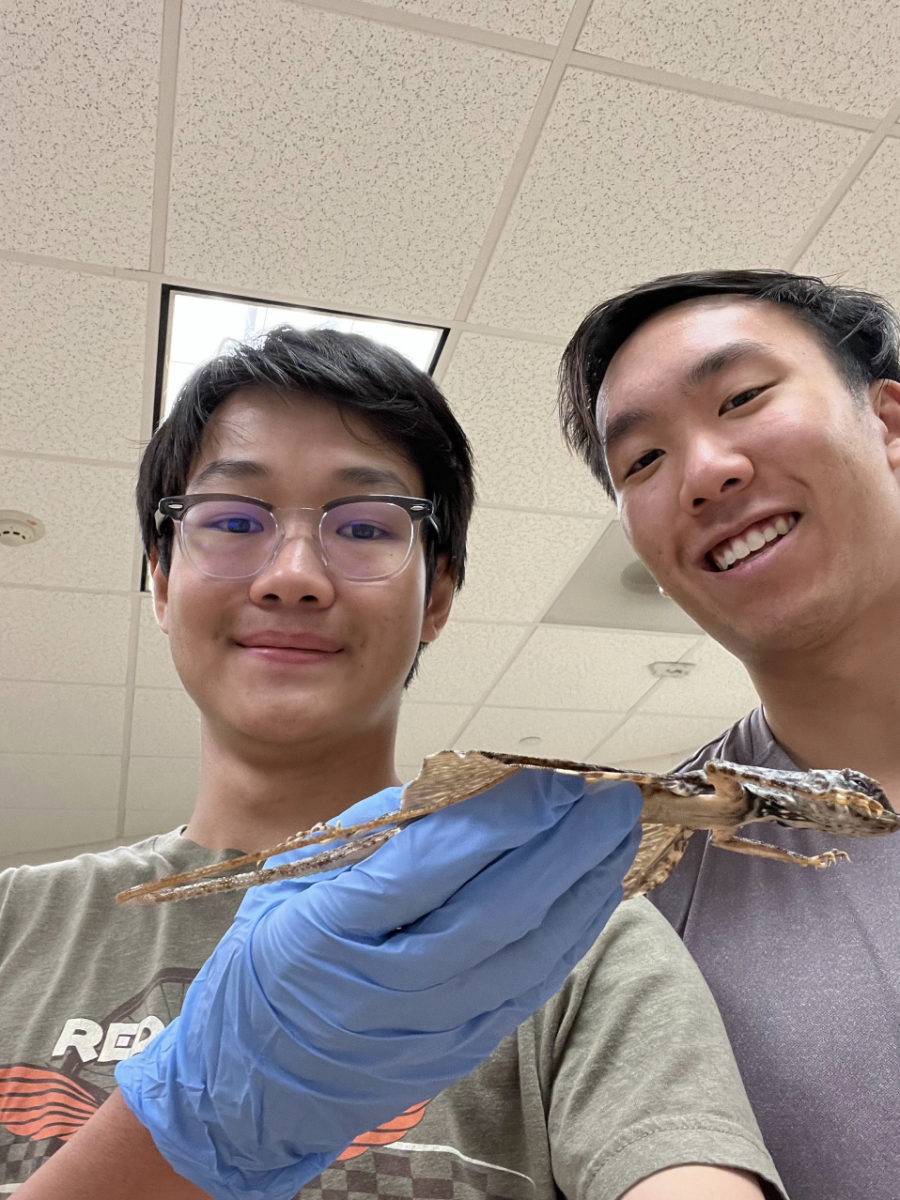
The theme driving STEM Bridge 2022 was sustainability, or more specifically, finding a way to implement sustainable sources of energy, food, and other resources. One of the major projects we worked on in our cohorts was creating a research poster focused on a topic related to sustainability. Having never worked on a research poster before, the task seemed daunting. However, with the help of the Bridgers in my group and the lovely Rose Guzenski and Amy Rose, our group was able to produce our very first research poster on whether or not hydroponically-grown produce was just as nutritious as conventionally-farmed produce. We presented our findings and research as a team alongside all of the other Bridgers to the professors, mentors, directors, and faculty of LaSU in the Zapara School of Business. This was an exciting experience I will never forget (as it was literally recorded and uploaded on Tabetha Johnson’s YouTube).
STEM Bridge served as the perfect opportunity to grow accustomed to the LaSU campus, make bonds I still cherish to this day, and explore many different career options that I may have never considered otherwise. A lot of the study methods and research skills I learned during STEM Bridge were almost immediately applied to most of my classes during my fall and winter quarters, such as one of the Honors classes, UHNR 114 The Scientific Process, SEA-PHAGES, and College English. Even if the decision to join STEM Bridge was a fleeting one, I can say without a doubt in my mind that it was the best thing I could have ever signed up for.
— Adam Tsao (Biology, Class of 2025)
STEM Pathways
STEM Pathways is a program that offers enhanced support to students pursuing a bachelor’s degree in STEM (this you?). It includes resources such as four-year-plans, mentoring, and advising, as well as opportunities for internships and research that support students’ college journey and help them make informed decisions about their future careers.


My involvement in STEM Pathways began by working with Dr. Helbley over the summer. I first helped her create four-year plan handouts for STEM majors. Students can now follow a pre-made plan to graduate in the next four years by simply scanning a QR code. Subsequently, I participated in STEM Bridge by helping to lead students in their research and daily STEM activities. STEM Bridge is a holistic, no-cost, two-week summer intensive for incoming first-year and transfer students interested in STEM majors. During this time, I also worked on posters that included the major-tailored four-year plans (yes, the meme ones). Lastly, I work as the General Chemistry Peer-Led Learning (PLL) lead. La Sierra’s PLL is a co-curricular support program for STEM classes that typically have a lower class pass rate. Sessions are led by students who have successfully taken the course previously (like yours truly).
I was motivated to participate in STEM Pathways because I was once a freshman that did not know DegreeWorks existed (it was not that long ago). Therefore, my favorite part of STEM Pathways is the emphasis on helping students figure out how to succeed. This program is an excellent opportunity to learn about success in college. Additionally, it is a great way to give back by teaching others the same skills in the future.
My involvement in STEM Pathways has taught me to help others succeed in their endeavors through tools like the four-year plans, Peer-Led Learning, and STEM Bridge. I recommend being informed about the program and attending related social events and workshops. Thank you for every opportunity, STEM Pathways!
— Ester Peiro (Biology/Biochemistry, Class of 2025)


PDFs and QR codes were kindly provided by Brenda Delfino and Ester Peiro.
Summer Research Experience (SRE)

The Summer Research Experience (SRE) during summer of 2022 was an opportunity for me to formulate a new lab project, gain diverse research experience, and get paid! I was given the opportunity to apply to the program through my Honors project mentor, Dr. Eugene Joseph, whose lab specializes in studying cancer. It was a great way to get started on a long-term project before the school year began, which is when it would be more difficult to schedule lab time during the week. This was my first experience doing research over the summer, so I was excited for the opportunity. The SRE is eight weeks of intensive research, where each week, you present on the work that you did. There is a final presentation at the end of Week 8 in which you present all of your findings to an audience, family included. You will spend the first few weeks navigating your plan for the project by making continuous adjustments, planning experiments, and learning how to perform procedures. Once most of the logistics are out of the way, you get to have fun performing experiments on your cells of choice. My research question was: Does a co-treatment of epigallocatechin-3-gallate (EGCG) and chloroquine (CQ) synergistically inhibit UMR-106 bone-like cancer cell proliferation? From this question, I began formulating specific aims:
- Treat UMR cells with CQ and measure proliferation using the LUNA-II automated cell counter
- Treat UMR cells with EGCG and measure proliferation using the LUNA-II automated cell counter
- Cotreat UMR cells with EGCG and CQ and measure proliferation using the LUNA-II automated cell counter

Since this project was designed for continuation throughout the school year, I focused on completing the first aim during the SRE. I have learned that working with cells requires a lot of waiting time because cells need to grow before performing an experiment and some treatments require incubation periods of multiple days. Planning is crucial because you are working on the cells’ time, not your own. Additionally, we do not employ the use of antibiotics because they can mess with experiments and results. As such, we must create and sustain a sterile workstation before, during, and after procedures, which takes time to prepare. I am planning on being a public health microbiologist, so working in a sterile, organized environment will be a well-developed habit.
My favorite part of lab work is learning how to perform procedures that can be applied to many other fields. For example, learning how to work under a flow hood is necessary for microbiology labs where you do not want contaminants to exchange between your sample and the environment. This is to protect not only your experiment, but also those who work in the lab. I have enjoyed learning about the intricacies of cancer mechanisms and how modern science may be able to combat deadly disease with natural products like antioxidants (EGCG). I was a newbie to cell culturing when I entered the lab this summer, but I left with skills that gave me more confidence in diverse lab settings. I will always be grateful for having an amazing summer research experience.
— Melissa Acevedo (Biomedical Science, Class of 2023)
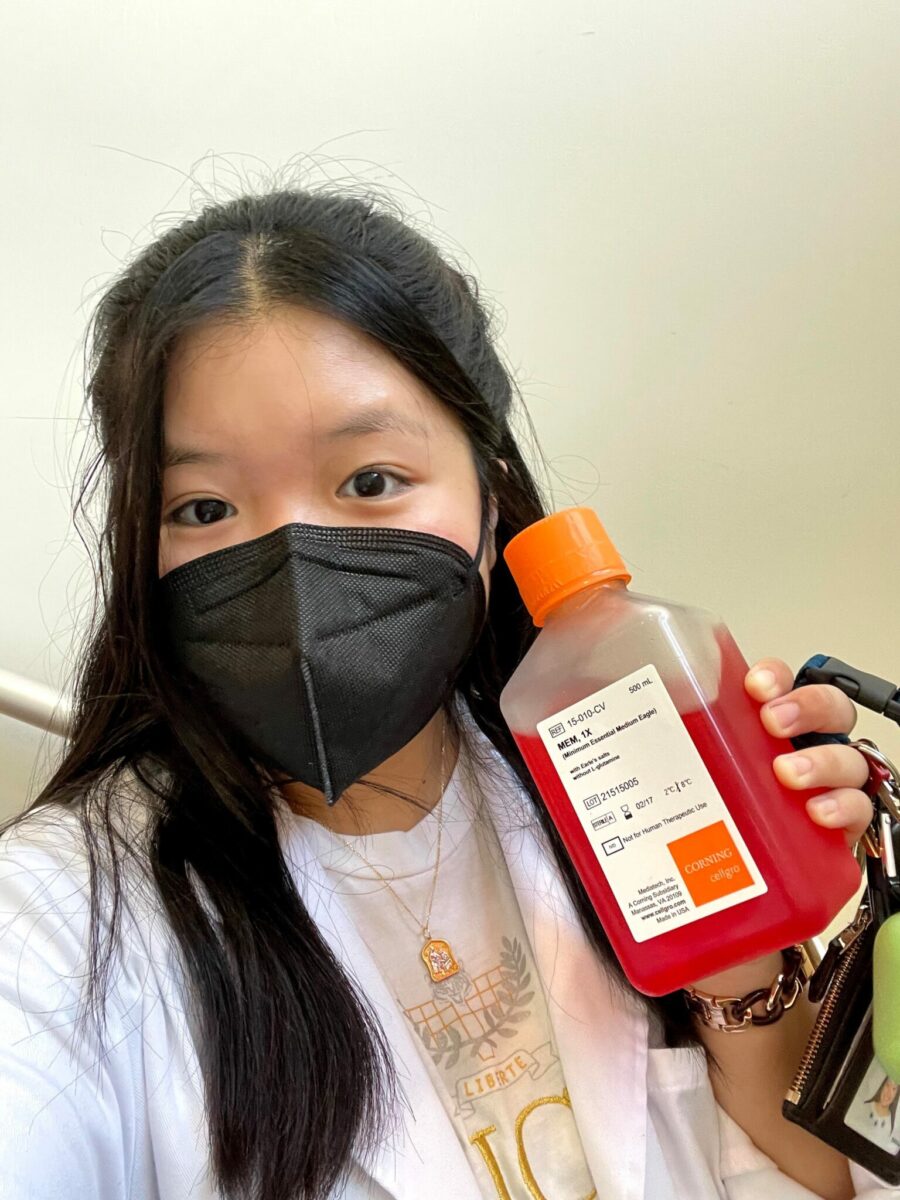
In the summer of 2021, I was blessed to participate in the Summer Research Experience (SRE). In this eight-week application-based program, undergraduates can conduct independent research under the guidance of a professor. After completing the SRE, students present their project findings to the Title V team, who provided grant funding for this academic activity. I became involved through my research professor, Dr. Eugene Joseph. Hearing what the SRE had to offer motivated me to work full-time with my cells. I wanted to make my summer meaningful and productive.
The investigative study was a long, tedious process with rat bone-like cancer cells. There were many sleepless nights, but it was all worth it in the end. I refined my passaging (a process where the cells are given new growth medium aka food!), ran many experiments, and worked on my presentation skills during weekly update meetings with Dr. Joseph and Dr. Gutierrez (SRE program coordinator). I accomplished the majority of my specific aims by the end of the two-month course.
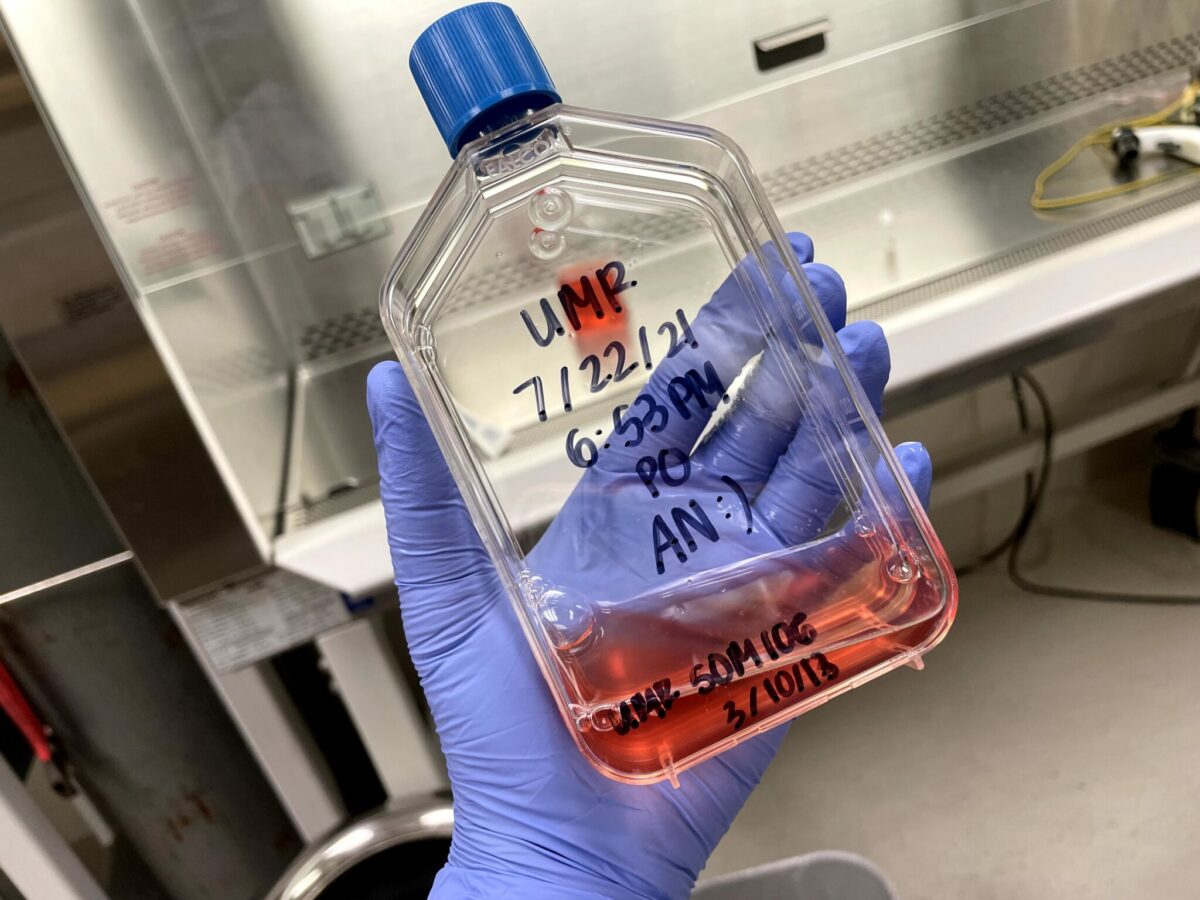
Looking back nearly two years later, my favorite part of the SRE was passaging (it is still therapeutic for me even now … I could probably do it in my sleep!), learning the ropes of scientific design, and creating a lasting friendship with my lab partner. The pilot program of the SRE only included me and another biology student, Kaitlyn Mamora. We had a blast together in the lab and ultimately traveled together in April 2022 to Philadelphia, where we presented our individual posters at the Experimental Biology 2022 conference. More about that here.
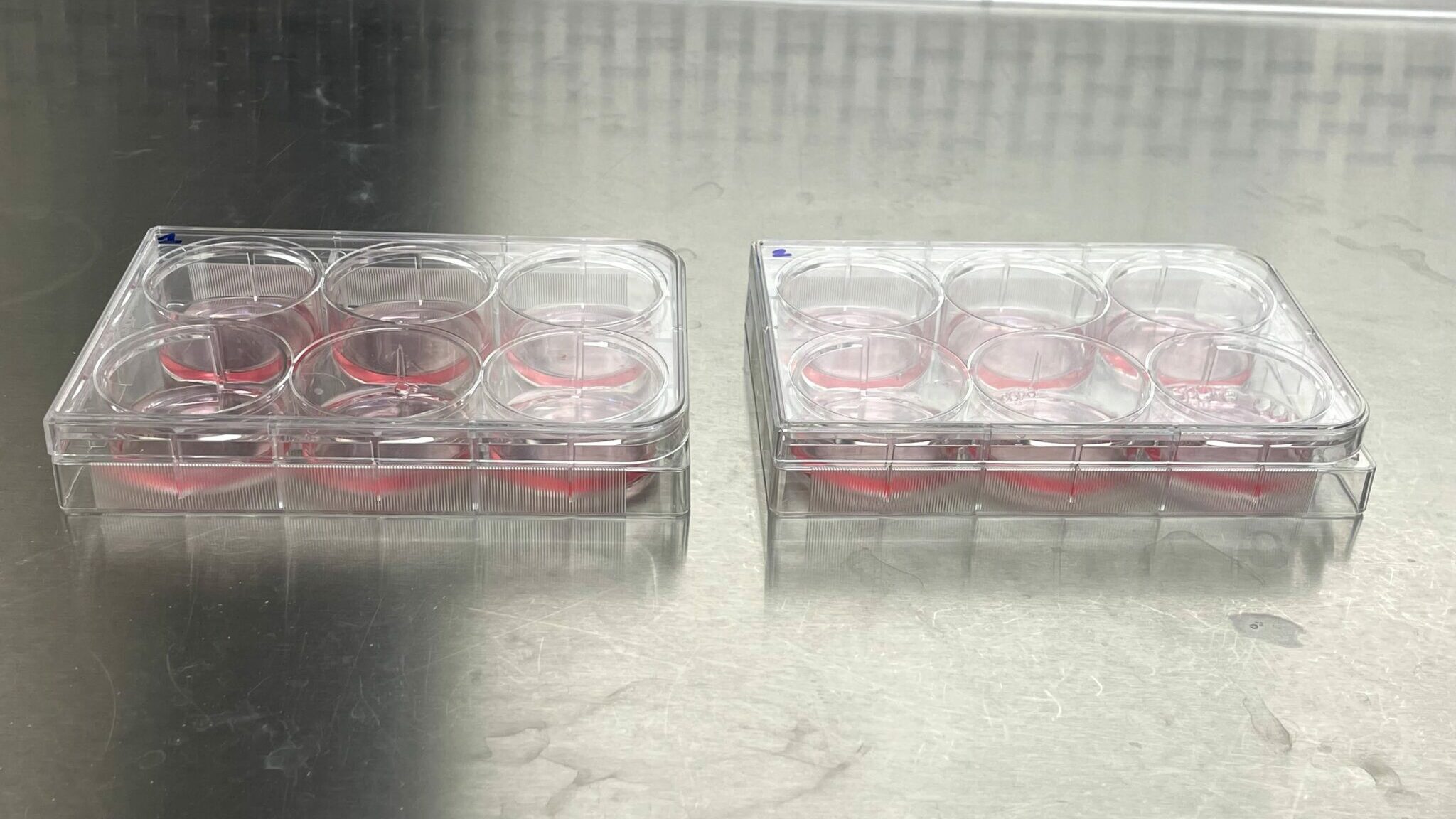
I learned plenty from my time with the SRE. The most important takeaway for me was to be patient with the cells because I will need to do the same when I care for my patients and must deal with challenging clinical cases in the future. Working in the lab requires hard work alongside much trial and error. Although I ran multiple experiments, it did not necessarily mean they were all successful. I had to accept some negative outcomes and reexamine the steps, procedures, and protocols that may have affected inconclusive data. This is what makes research so rewarding and exciting to me. Understanding the unique aspects of the scientific process from every single angle highlights the importance of this worthwhile educational venture… one that I will always appreciate.

This memorable Summer Research Experience influenced my Honors Scholarship Project immensely. I have been fortunate to have an idea of what my project would be ever since the tail end of freshman year/beginning of sophomore year. It was not until the SRE that my project truly took flight. Being in the lab was nearly impossible during my second year, as campus operations moved remotely due to the COVID-19 pandemic. I am grateful that the SRE afforded me the opportunity to work on my project far in advance so that I had more time during the school year to run more experiments and tie up any loose ends.
Overall, the SRE was a big part of my college life at La Sierra University and encompassed one of many components that defined my research journey. Much love and appreciation goes out to Dr. Joseph, the biology department, and the Title V team for their support and mentorship at the height of a global public health emergency.
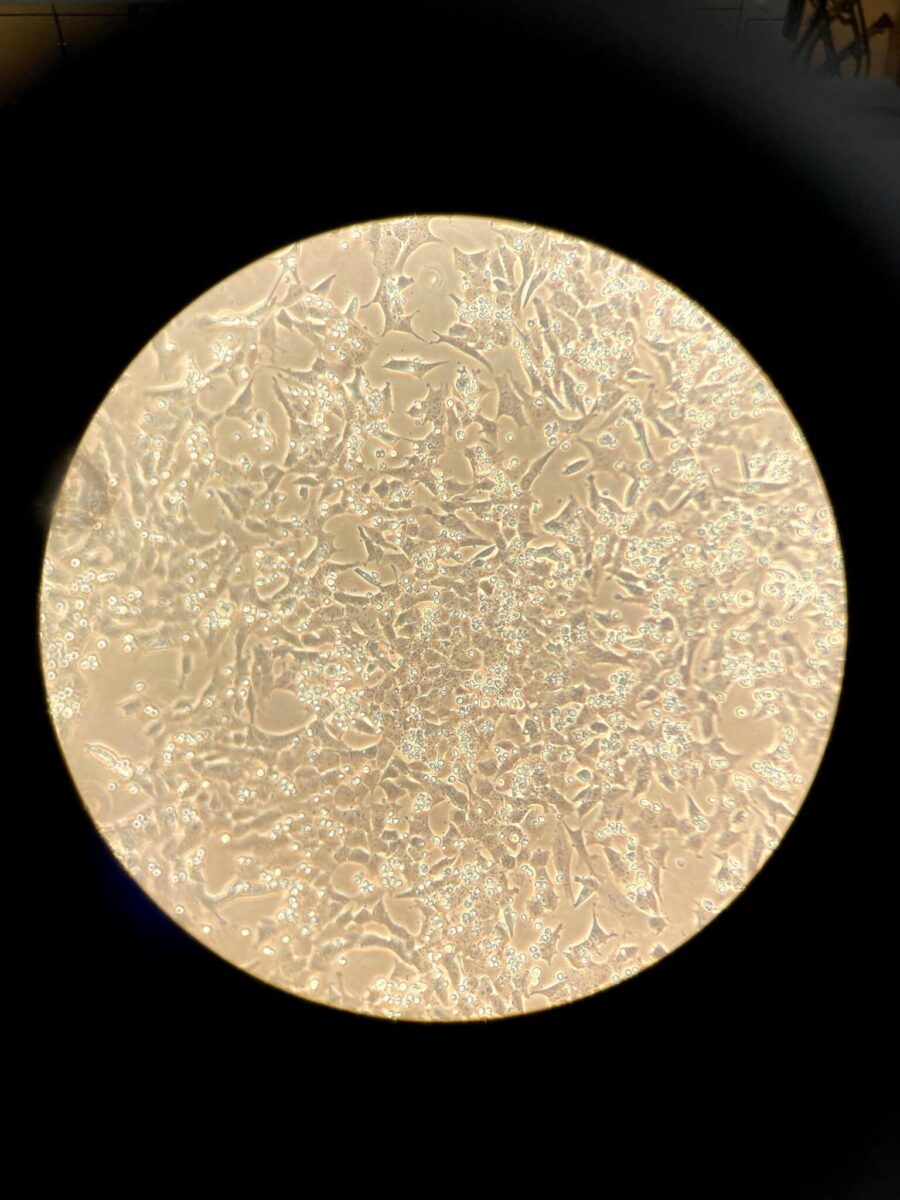
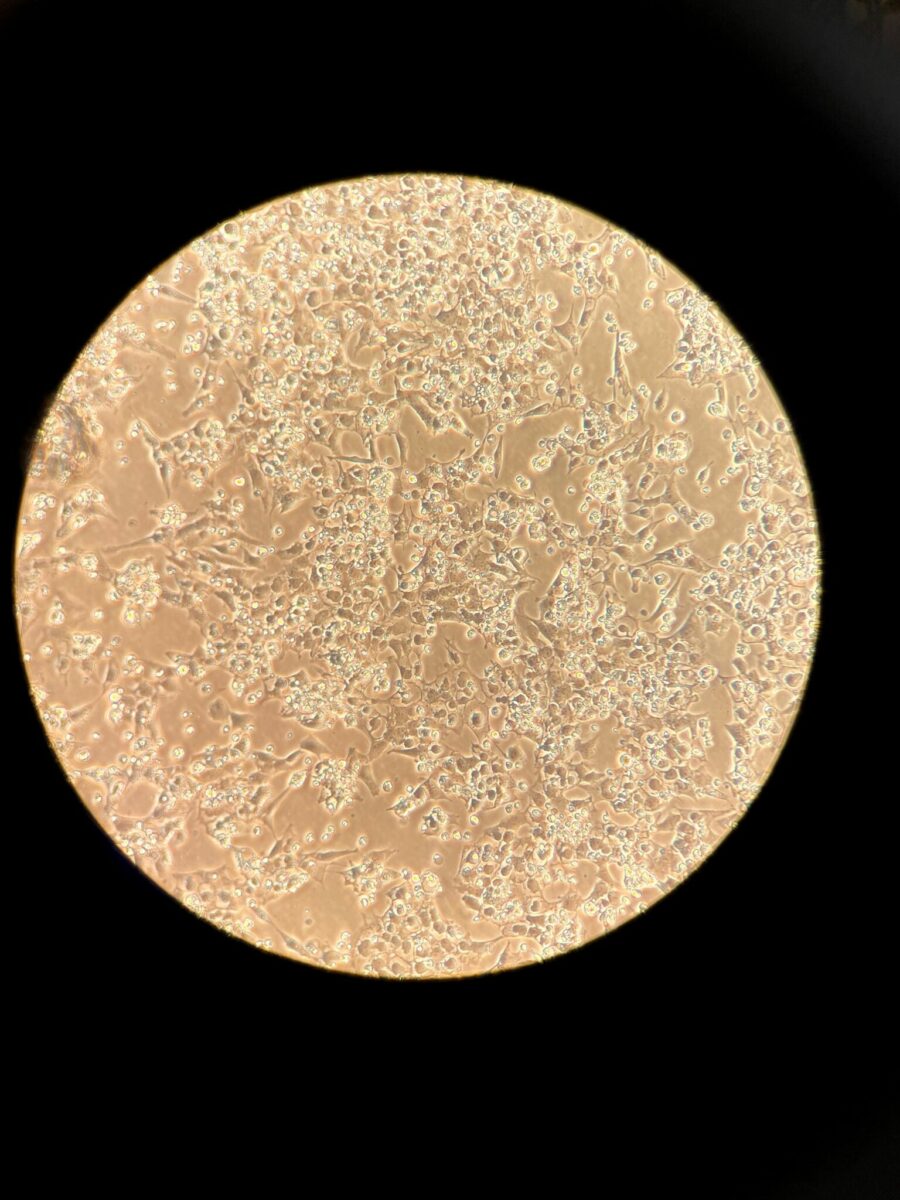
Read more about my experiences with the SRE here!
— Ailinh Nguyen (Biomedical Science, Class of 2023)
Testimonials from the Title V Team
I am the STEM Pathways coordinator. STEM Pathways is a support program for students that enter a STEM Guided Pathway. It offers enhanced support to students pursuing a bachelor’s degree in STEM. Students can take advantage of clear course schedules, holistic advising, peer mentoring, priority access to internships, research and directed study opportunities, and a variety of resources to support their college journey and help them make informed decisions about their future careers. We host social events, skill workshops, support group meetings and partner with multiple departments on campus to ensure students are connected to all the resources available to help them succeed.
— Brenda Delfino, STEM Pathways Coordinator
Peer-Led Learning is a co-curricular support program for STEM classes that typically have a lower class pass rate. Sessions are led by students who have successfully taken the course previously. Games, flashcards, and other study skills are taught to help remember key concepts and difficult material. Sessions run from Week 2 through Week 10. Currently, we offer sessions for Math 006, Math 007, Math 121, Math 122, Biology 112, Biology 132, Chemistry 112, Chemistry 121, Chemistry 281, Chemistry 282, Psych 104, and HLSC 214. We are always looking for students to run sessions, so students can reach out to me directly if they are interested in running a session for a class that is not listed.
— Rose Guzenski, Peer-Led Learning Development Coordinator
I create and maintain the four-year plans for the STEM majors and then help students customize them to their academic pathway. For Honors students, it is extremely important that they start their very first quarter with a good plan on what courses they need to take and when the important courses are for their chosen major. I also help them understand when to start working on forming relationships with a research mentor so that they have sufficient time to get a really good scholarship project done. Finally, when course scheduling conflicts arise, I have good working relationships with instructors and departments so we can help resolve the conflicts while keeping all the students on track.
— Jennifer Helbley, Guided Pathways Curriculum Developer & Faculty Advisor
Our STEM Bridge program helps students get a head start on their educational and career goals to foster long-term success in our undergraduate STEM population. We give STEM students holistic academic and social support, which they have reported gives them confidence as they begin their college careers. We have seen excellent peer support developing between the student cohorts.
We are planning an exciting STEM Bridge 2023 with more interdisciplinary education and additional program elements and hope to grow the program by another ten to twenty students.
— Tabetha Johnson, STEM Services Development Coordinator

